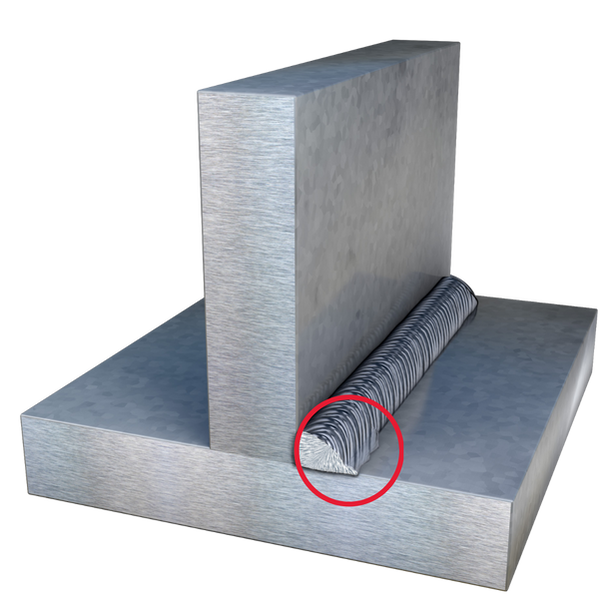Professional Strategies for Preventing Weld Undercut Successfully
Professional Strategies for Preventing Weld Undercut Successfully
Blog Article
Essential Tips for Welders: Protecting Against Undercut Welding and Ensuring Stronger Weld Joints
In the world of welding, achieving solid and durable weld joints is the keystone of creating premium job. One usual challenge that welders typically experience is undercut welding, which can jeopardize the integrity of the weld joint.

Understanding Undercut Welding
Undercut welding is an usual welding issue that takes place when the weld metal fails to effectively fill up the groove and leads to a groove-like anxiety along the weld bead. This issue deteriorates the weld joint, making it at risk to cracking and failure under stress and anxiety. Undercutting can be brought on by different elements, consisting of extreme welding current, high welding speed, inappropriate electrode angle, incorrect electrode size, and inadequate welding strategy.
Among the main reasons for undercut welding is an inequality in between the welding existing and the welding speed. If the welding current is as well high or the welding rate is also quick, the weld metal might not effectively fill the groove, causing damaging. Furthermore, utilizing an electrode that is also huge can lead to a comparable end result, as the excess metal can not properly move into the groove.
To protect against undercut welding, welders should guarantee they are utilizing the proper welding specifications, keep a suitable electrode angle, choose the appropriate electrode dimension, and method correct welding methods. By addressing these factors, welders can decrease the threat of undercutting and create more powerful, more dependable weld joints.
Correct Welding Strategy
Effective welding method plays a crucial function in making certain the quality and integrity of weld joints. One fundamental element of appropriate welding method is keeping the appropriate angle and distance in between the welding weapon and the work surface.
In addition, a steady and constant hand motion is vital for developing solid and resilient weld joints. Welders need to go for smooth, consistent activities to guarantee also circulation of the weld product. Proper manipulation of the welding weapon and filler material is likewise crucial to attaining optimum infiltration and fusion.
Furthermore, regulating the warmth input and selecting the proper welding criteria based upon the product being welded are vital elements in achieving top quality welds - Preventing weld undercut. Welders should comply with the advised settings supplied by welding treatment specs and change them as required based upon the details needs of the project. By understanding correct welding strategies, welders can substantially boost the strength and dependability of their weld joints
Choosing the Right Electrode
When taking into consideration the relevance of selecting the best electrode in welding applications,Preserving the correct angle and range between the welding weapon and the workpiece is essential. The choice of electrode plays a critical role in identifying the high quality and toughness of the weld joint. Electrodes come in numerous kinds, each created for specific objectives and products.
Firstly, choosing the proper electrode diameter is vital. Thinner electrodes are suitable for welding thin products, while thicker electrodes are better for thicker materials and higher warm applications. Matching the electrode size to the density of the workpiece helps accomplish a well balanced weld.
Second of all, recognizing the product make-up of the electrode is important. Various electrodes are developed for welding particular materials like steel, stainless-steel, light weight aluminum, or cast iron. Making use of a knockout post the proper electrode product makes sure good blend and decreases the threat of defects in the weld.
Last but not least, taking into consideration the welding setting and method is important when choosing the electrode kind. Specific electrodes are much better suited for above or vertical welding settings, while others work well for level or straight settings. Selecting the ideal electrode based upon the welding technique boosts the general weld quality and stability.
Preparing the Base Metal
To make certain a successful welding procedure, what preliminary actions should be taken when preparing the base steel for welding? Furthermore, any existing weld material or residue from previous welding need to be eliminated to make sure a clean surface area for the brand-new weld.

Carrying Out Post-Weld Assessments

After performing these evaluations, welders should contrast the results against market standards and job needs to make sure that the weld joint satisfies all required criteria. Any deviations or inadequacies found throughout the post-weld evaluation needs to be immediately addressed with ideal restorative procedures to assure the weld's integrity. By faithfully doing post-weld examinations and promptly resolving any type of problems, welders can maintain the quality and reliability of their job, eventually contributing informative post to the safety and durability of the welded structures.
Final Thought

In verdict, stopping undercut welding and guaranteeing more powerful weld joints require a combination of appropriate welding method, choosing the best electrode, preparing the base metal correctly, and carrying out post-weld evaluations. By recognizing the root causes of undercut welding and executing the required preventative measures, welders can generate premium weld joints that satisfy industry requirements and guarantee the structural honesty of the bonded components.
Undercut welding is a common welding flaw that happens when the weld metal stops working to appropriately load the groove and results in a groove-like depression along the weld bead (Preventing weld undercut). Damaging can be created by numerous factors, consisting of extreme welding current, high welding rate, inappropriate electrode angle, wrong electrode size, and poor welding technique
One of the primary reasons for undercut welding is an imbalance in between the welding present and the welding rate. If the welding current is as well high or the welding rate is also quick, the weld steel might not effectively fill the groove, leading to damaging.Preserving the right angle and distance in between the welding go right here gun and the workpiece is essential when considering the importance of picking the right electrode in welding applications.
Report this page